As temperatures soar this summer, your plants probably look like they’re no longer speaking to you: their leaves start wilting, the tips curl up, the edges turn brown and crisp. SOS! These are all signs that your plants are in distress.
Your first instinct might be to reach for the fertilizer to perk them up—a boost of nutrients can only help, right?
But in really hot weather, you’d actually be doing more harm than good.
During periods of drought or heat stress, fertilizing your plants is generally a bad idea. So is fertilizing them when they’re dormant—you may already know that plants don’t need fertilizer in winter when they aren’t actively growing, but extreme heat (combined with glaring sun, drying winds, and lack of soaking rains) can cause summer dormancy as well.
Here’s what you should know about fertilizing in hot weather—and when it’s safe to do so.
Fertilizers are not accessible to plants in very dry soils
Have you been forgetting to water your plants? Or do you go weeks without watering and then drench your garden all at once?
Then don’t waste your time or money on fertilizers; instead, work on providing your plants with consistent moisture. Automation is key; I recommend using drip irrigation with a timer (especially for raised beds and containers), or connecting your sprinklers to a weather-based irrigation controller.
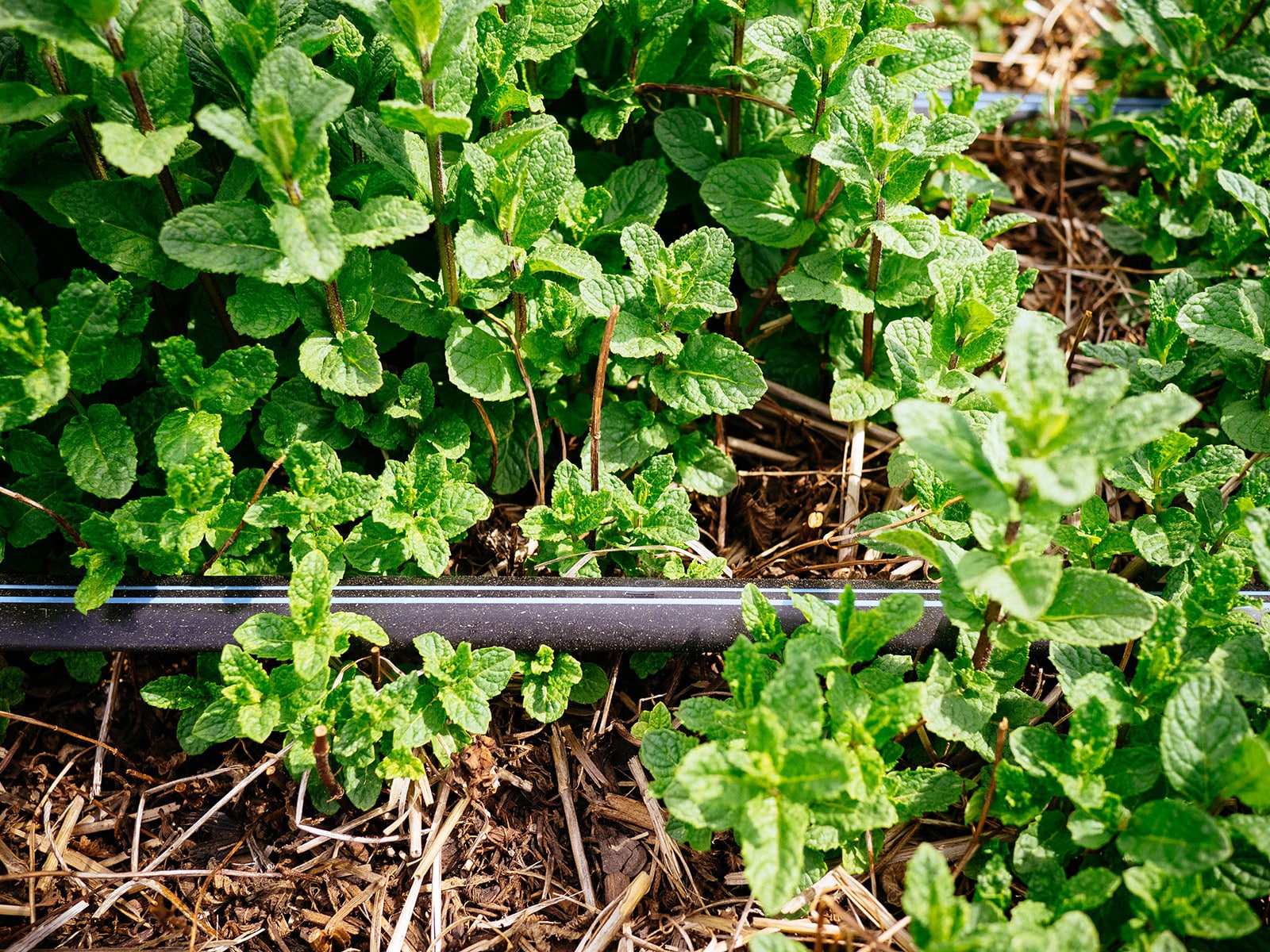
Read more: How to water your garden during a heat wave (plus hot-weather watering myths debunked)
When temperatures return to normal, make sure the soil is evenly moist before applying an organic slow-release granular fertilizer, then water again to distribute nutrients throughout the soil. When you apply fertilizer, it doesn’t need to be dug in; just sprinkle it around the base of your plant and spread it through the top inch of soil (with a small hand rake or trowel) before watering it in.
Too much nitrogen can actually make it harder on your plants
When fertilizer is applied, especially one that’s high in nitrogen, it triggers plants to produce more new growth. With the increase in new growth comes an increase in water and nutrient needs. In very hot weather, when soil is prone to drying out more quickly, plant roots may have a hard time keeping up with these needs.
If you want to fertilize in summer, make sure you provide plants with enough water. Aim for longer (but less frequent) watering sessions to encourage roots to grow more deeply into the soil to access nutrients.
Avoid fertilizing when temperatures are consistently above 90°F
Many plants start to enter survival mode during prolonged heat spells, and going into dormancy is a natural way of coping with the stress. In their semi-dormant state, plants aren’t able to use the nutrients you give them, so leave them be until conditions become more favorable.
You can help your plants along by making sure there’s a good layer of mulch around the root zone; this stabilizes the soil temperature and reduces the amount of moisture lost through evaporation. Hanging a shade cloth or light-colored bed sheet above your plants can also offer respite from the heat.
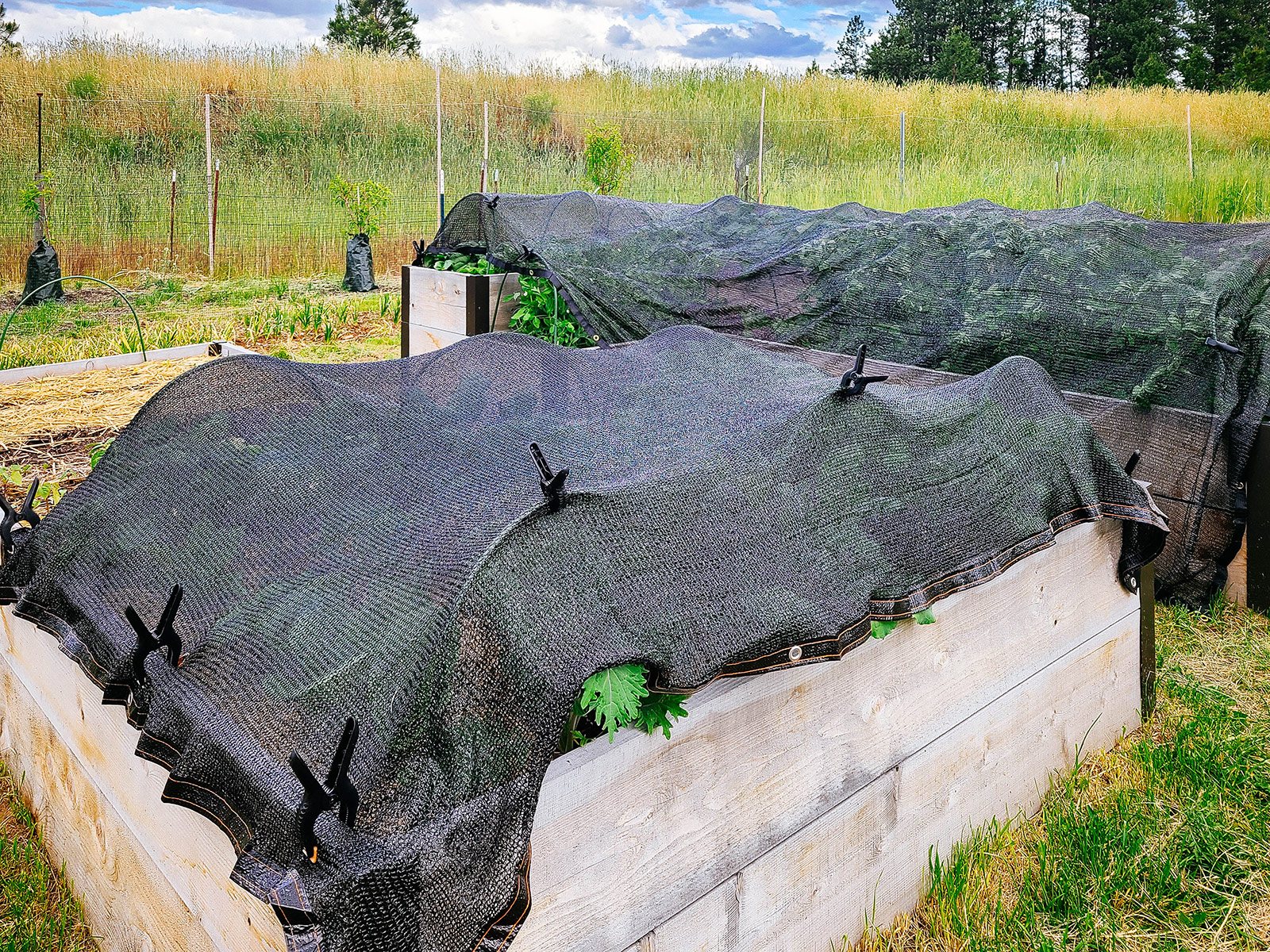
Disclosure: If you shop from my article or make a purchase through one of my links, I may receive commissions on some of the products I recommend.
Where to buy
Shade cloth
This is especially important for plants like tomatoes, which struggle to flower in very hot weather. You might be alarmed at how fast the blooms are dropping and think you need to fertilize, but it’s just your plants’ response to extreme heat. Give them shade instead!
In hot weather, compost makes a great alternative to fertilizer
When afternoons are unrelenting in the 90s (Fahrenheit) but you’re growing heavy feeders like squash and tomatoes, a 1- to 2-inch layer of finished compost can provide the nutrients your soil needs without damaging your plants.
That’s because compost (homemade or commercial) usually has an NPK analysis of about 1-1-1, making it a dilute soil amendment. (Actual nutrient content will vary based on the ingredients that went into the compost and how they were composted.)
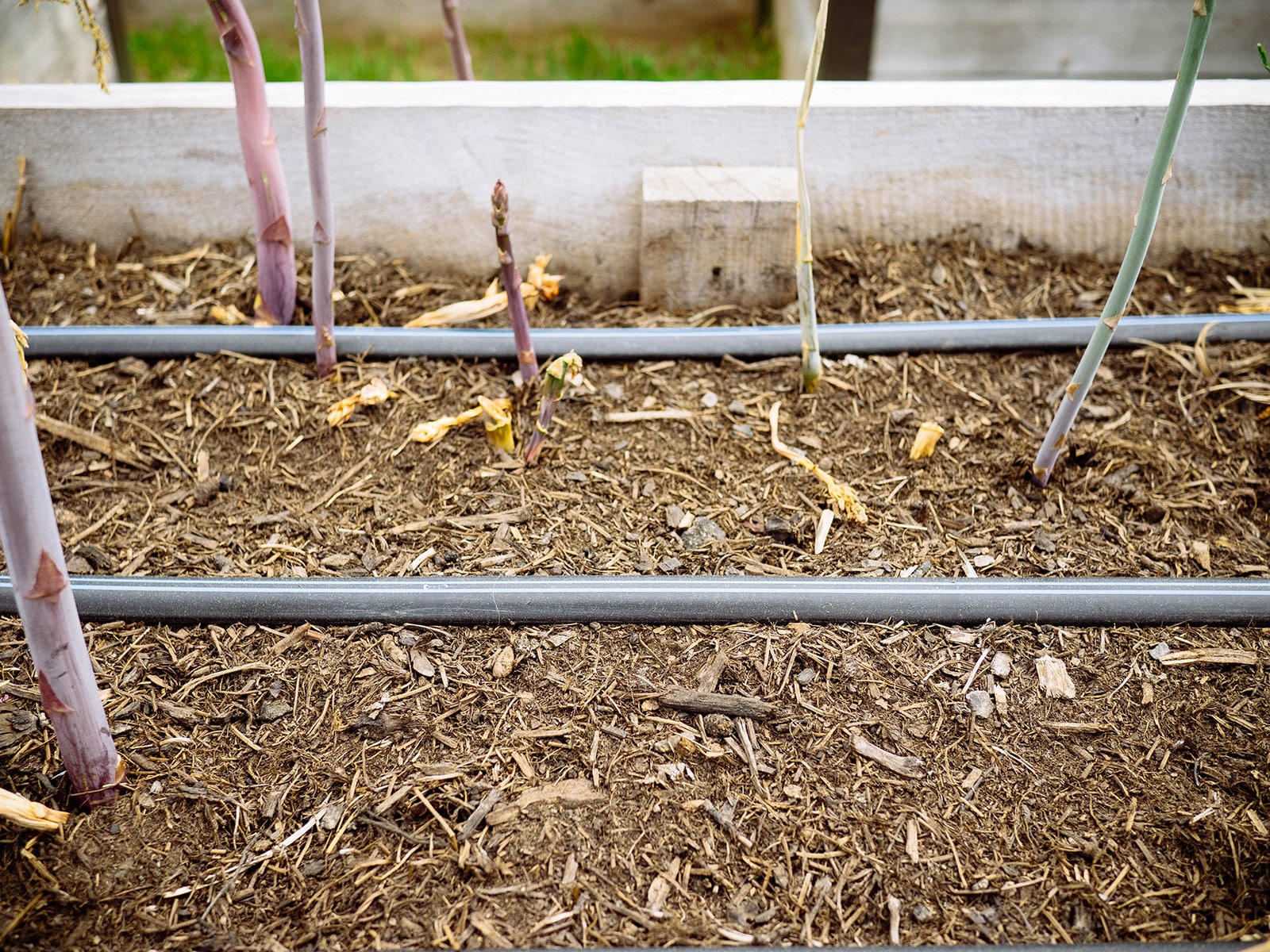
Compost also improves soil structure that’s too light or too heavy, and you can use it alone as a mulch. This is the main way I increase soil fertility in my garden every year, as compost provides a good long-term feeding for edible crops and other plants (and reduces the amount of fertilizer I need to use each season).
If you must fertilize during a heat wave, take it easy
Vegetables and other plants with high nutrient demands do benefit from fertilizer in summer when they’re most productive, so sometimes it’s hard to take a step back if you’re after abundant blooms or huge harvests.
During a heat wave, you can fertilize your plants if you go about it carefully. First, does your plant look healthy and happy? Is it getting consistent water and sprouting new leaves? If so, then it probably won’t mind a light application.
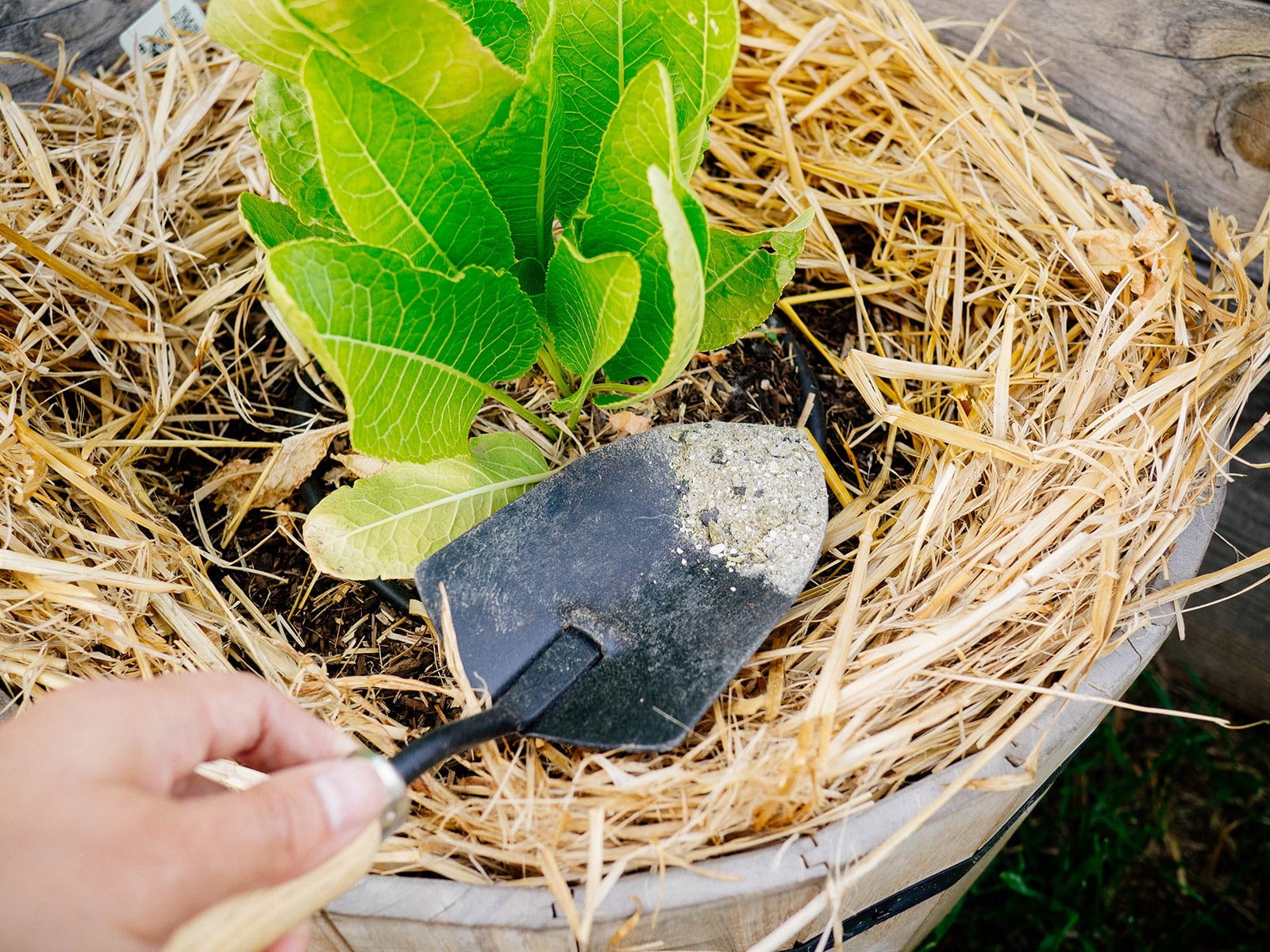
Opt for an organic slow-release fertilizer, which is much less likely than synthetic fertilizer to burn your plants. Use half the amount recommended by the manufacturer; I prefer to fertilize in the late afternoon to early evening when it’s cooler and water has time to seep deeper into the soil before it evaporates.
Where to buy
Organic slow-release fertilizers
When to choose liquid over granular fertilizers
Slow-release granular fertilizers work well to give your plants a steady feeding over several months, but what if your plants look stunted or seem to be growing very slowly?
Then you might want to use a liquid (water-soluble) fertilizer instead, which provides an instant shot of nutrients that your plants can uptake much quicker.
In very hot weather, simply dilute the liquid fertilizer at half-strength and water the root zone of your plants. If your plants respond well (or at least show no negative reactions), then repeat the half-strength application every one to two weeks until you see a flush of new growth.
My favorite type of water-soluble fertilizer is a liquid fish emulsion, which I dilute in a large watering can to feed container plants and in-ground plants.
Where to buy
Organic liquid fertilizers
Pssst… You might not even need fertilizer
Many people think of fertilizer as a way to feed their plants, but you should really frame it as a way to replenish the missing nutrients in your soil.
How do you know what’s missing in your soil? Two ways:
1. Look at your plants.
Are they healthy and productive each season? Are you happy with how much they’re flowering and fruiting? Then assume your soil has enough nutrients to sustain the plants.
I know, this isn’t a very scientific way to gauge things. But if your plants are producing reasonably well, they’re likely getting what they need from the compost you’re adding, the cover crops you’re growing, and/or the organic mulch that breaks down into the soil every year.
The exception is if you are aiming for fast growth or want to maximize your harvests each season (and I don’t blame you, as I’d rather grow a massive cabbage than a small cabbage). If it feels like you should be getting a lot more out of your garden with how much effort you put into it, then consider the next option below.
2. Do a soil test.
The best source for testing the soil in your garden is your local Extension Service. They’ll send you a list of reputable soil testing labs that have the equipment to run detailed nutrient analyses. (I don’t recommend using a home test kit if you really want to understand what’s going on in your soil, as the kit usually won’t provide results as accurate as a soil testing service.)
Once you get the results of the soil test back, you’ll know exactly what your soil is lacking. If the report says you need more nitrogen, then you only need to add a nitrogen fertilizer (like blood meal or feather meal).
If the report shows that you already have high levels of nutrients (which is possible if you’ve been fertilizing your garden for years), then you don’t need to add anything, as it may actually inhibit your plants’ growth.
You don’t have to do a soil test every year, though it’s a good idea to get one every three to five years to establish a base line. (The more active your garden—such as a vegetable garden where plants are continuously grown and replaced—the more regularly you should test your soil.)


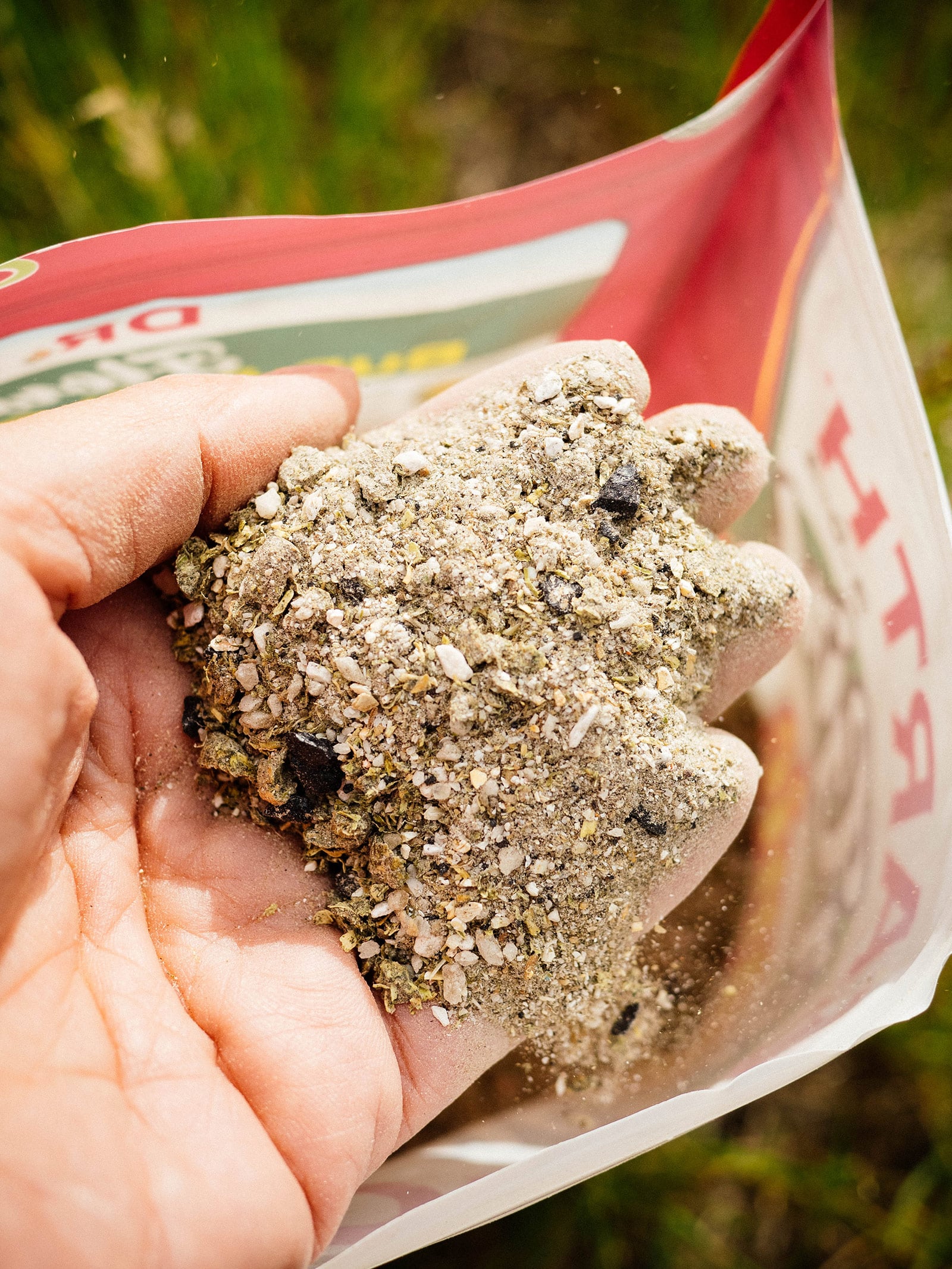













how to make my own fish emulsion in a 5 gallon container